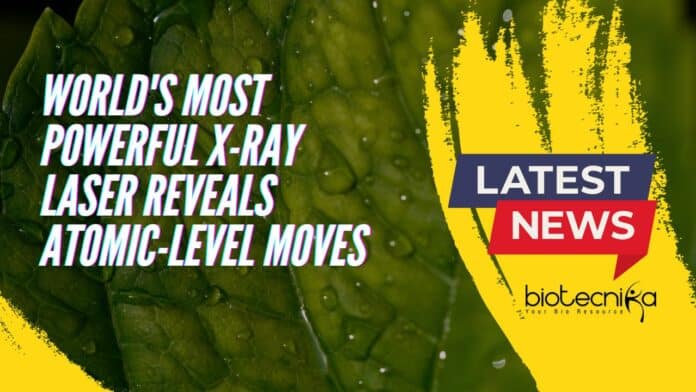The upgraded X-ray laser at the SLAC National Accelerator Laboratory in Menlo Park, California is now the most powerful in the world. It began producing its first beams on September 12th and is capable of generating one million X-ray pulses per second. This technological advancement will allow scientists to study ultrafast processes at the atomic level by creating high-speed movies of chemical reactions. It has the potential to unlock the secrets of photosynthesis and contribute to the development of new electronic materials for computing systems.
The upgrade to the laser, called LCLS-II, has been in progress for over a decade and cost $1.1 billion. It has significantly increased the instrument’s repetition rate and brightness, enabling chemists and biologists to make molecular movies of unprecedented clarity. This means they can observe rare molecular events that were previously invisible to other instruments. The LCLS-II “opens up entirely new possibilities” for various types of research, including quantum materials science, according to Mike Dunne, the director for the LCLS.
The original X-ray laser at SLAC, now known as LCLS-I, was the first instrument in the world to combine the probing capabilities of high-energy X-rays with the speed of a laser. It was a leap
into the unknown and its success paved the way for similar systems to be built in other countries. However, the LCLS-II is a significant upgrade, with improvements made to the undulator system that creates the X-rays. The upgrade replaces part of the copper pipe on the electron accelerator with superconducting niobium cavities, allowing for faster X-ray pulses.Scientists, particularly chemists and biologists, are eagerly awaiting the opportunity to use the LCLS-II for their research. Junko Yano, a molecular biophysicist, has been preparing for a “dream experiment” for ten years and is excited to finally have access to the instrument. Yano used the original X-ray laser to study photosynthesis at the atomic level and hopes to go even further with the LCLS-II. She wants to understand not only the structure of molecules but also how charges and spins change during a reaction. This knowledge could have applications in solar-fuel production systems and other areas of research.
The LCLS-II will also provide benefits to graduate students and chemists. Its powerful X-ray pulses will allow scientists to work with more dilute samples of chemicals and biomolecules. This means that graduate students studying photochemistry, for example, will be able to study new molecules without having to spend years synthesizing enough of the compound. Additionally, chemists will be able to study catalysts under more realistic conditions, which will aid in the development of new materials.
While the LCLS-II is currently the most powerful X-ray laser, plans are already in motion for further upgrades. The SLAC team is planning to increase the hard X-ray beam’s pulse rate to a megahertz, surpassing the current record held by the European XFEL. Another X-ray laser being built in Shanghai might also provide competition when it becomes operational. Despite this competition, scientists are excited about the advancements being made in X-ray science and the new possibilities for research that they bring.
In conclusion, the upgrade to the X-ray laser at the SLAC National Accelerator Laboratory in California has created the most powerful X-ray laser in the world. This advancement will enable scientists to study ultrafast processes at the atomic level and create high-speed movies of chemical reactions. The LCLS-II opens up new possibilities for research in various fields and has the potential to unlock the secrets of photosynthesis and aid in the development of electronic materials. Graduate students and chemists will benefit from the instrument’s powerful X-ray pulses, allowing for the study of more dilute samples and catalysts under realistic conditions. While the LCLS-II is currently the most powerful X-ray laser, plans for further upgrades are already underway.
Keywords: X-ray laser, SLAC National Accelerator Laboratory, LCLS-II, chemical reactions, atomic level, photosynthesis, electronic materials, ultrafast processes, X-ray pulses, scientific research.



























